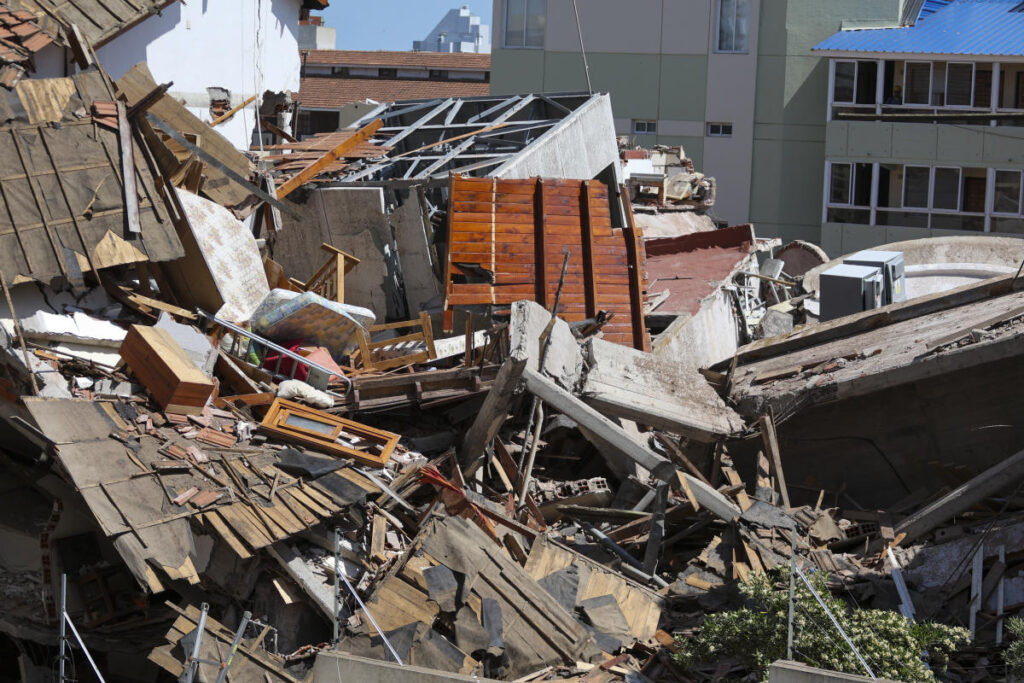A tragic incident occurred on Tuesday when a 10-story hotel, the Dubrovnik Hotel, collapsed in Villa Gesell, a coastal city in Argentina. The structure was under renovation when the disaster struck, resulting in the death of an 80-year-old man and leaving at least seven others trapped amidst the debris. Emergency responders, including firefighters, began immediate efforts to rescue any survivors buried in the rubble, reaching one woman who had survived the collapse. The incident has drawn significant attention, prompting local authorities to launch an investigation into the circumstances surrounding the collapse.
Early reports indicated that the renovation work on the hotel was being carried out without the necessary permits required by the municipality of Villa Gesell. This detail has raised questions about compliance with safety regulations and the protocols that govern construction and renovation projects. The lack of proper permits suggests potential oversight or negligence, which could play a crucial role in determining liability for the incident. Local officials are expected to examine not only the immediate cause of the collapse but also the broader context of the renovations undertaken at the hotel.
The news of the collapse has sent shockwaves through the community, emphasizing the potential hazards of construction work, particularly when it involves older buildings undergoing significant changes. Javier Alonso, the security minister for Buenos Aires province, provided updates on the situation, confirming the death of the elderly man and the rescue of the woman from the debris. The ongoing search for additional survivors highlights the urgency of the rescue efforts, as the identity and wellbeing of the trapped individuals, presumed to be construction workers, continue to be a primary concern.
As rescue operations unfold, teams have employed a methodical approach to remove rubble by hand while awaiting additional machinery, including a crane, and the expertise of engineers to assess the structural integrity of the site. This demonstrates the careful and deliberate procedures typically followed in such emergencies, ensuring the safety of rescuers while attempting to reach those trapped. The coordination between various emergency services calls attention to the complexities involved in disaster response.
The investigation led by the prosecutor is likely to delve into the hotel’s renovation plans, the qualifications of the workers, and adherence to safety standards. The scrutiny faced by those involved in the renovation work may lead to legal repercussions if negligence is established. Furthermore, this incident could prompt a review of regulatory measures in place for construction projects throughout Argentina, potentially influencing future policies related to building safety and compliance.
Overall, the collapse of the Dubrovnik Hotel serves as a stark reminder of the risks associated with construction practices in urban environments. The loss of life and potential injuries highlight the critical importance of ensuring safety protocols are followed rigorously. As the community grapples with this tragedy, it emphasizes the need for vigilant oversight of building renovations and stricter enforcement of construction regulations to prevent similar incidents from occurring in the future.

